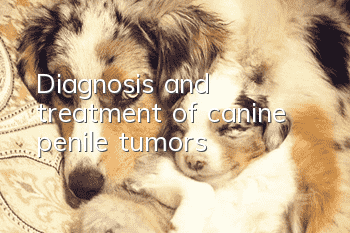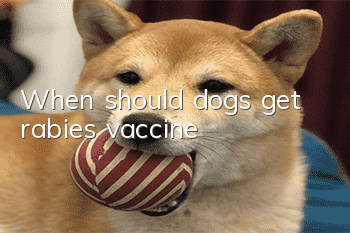Diagnosis and treatment of canine penile tumors!

Canine penile tumor is a spontaneous tumor that invades the external genitalia and other mucous membranes of dogs, also known as contact infectious lymphosarcoma. Tumors are usually divided into leaf-shaped and cauliflower-shaped. The most common site of occurrence is the external genitalia, such as the foreskin or penis, but it can also occur in organs other than the reproductive organs. The occurrence of this disease is mostly related to the mating of dogs of the opposite sex with this disease. Early treatment can use drug therapy or radiotherapy, but it is difficult to completely eradicate and is easy to relapse. In the later stage, due to the larger tumor size and more bleeding, surgical treatment is often performed. In severe cases, normal urination may be affected and urinary tract diversion surgery is required. The author treated a case of canine penile tumor at the end of last year. Due to massive bleeding and large size, the patient underwent surgical resection and was successfully treated with hormone therapy.
1. Clinical physical examination of a male Teddy dog, nearly 2 years old, 4.9kg, not castrated, a semi-free-range pet dog in rural areas. In recent days, the owner has discovered that there is blood flowing out from the foreskin, more bleeding after urination, and the root of the penis appears to be swollen. He went to another pet hospital and was diagnosed with a canine penile tumor, requiring surgical removal and urethral diversion surgery. The owner did not agree to the urethral diversion surgery and came to our hospital for diagnosis and treatment.
The affected dog is physically strong, slightly excited, and has a normal body temperature. Bleeding from the foreskin orifice and eversion of the foreskin of the penis revealed a three-petal petal-shaped tumor at the junction of the penis base and the foreskin, with the diameter of the petals ranging from about 2.0 to 3.0 (Figure 1).
The main complaint is that the dog is a semi-free-range pet dog, often goes out freely, has a strong sexual desire, and sometimes gets excited or makes mating movements when seeing a female dog in estrus. Based on the chief complaint and clinical diagnosis, the preliminary diagnosis was a transmissible tumor caused by mating. In order to rule out malignancy and proceed with surgical treatment, laboratory tests are recommended.
Penile tumors 2. Laboratory tests 2.1 Routine blood examination: See Table 1 Table 1: Routine blood examination results
The blood routine results were basically normal, with a slight decrease in red blood cells and hemoglobin, which may be related to recent excessive bleeding in the affected area. The total number of platelets was normal, and surgery could be performed.
2.2 Tumor tissue biopsy: (Figure 2, Figure 3)
Figure 2: Tumor section 1
Figure 3 Tumor sections
From the gross anatomy and tissue sections, it shows nodular growth, with clear boundaries between the tumor and the surrounding tissue. The sections show a complete connective tissue envelope on the outside, and the internal structural cells are relatively complete, with similar cell structures and inconspicuous division phases. The atypia was mild, and the cell structure was judged to be a sarcoma, which was judged to be benign. 3. After treatment under general anesthesia, lie on your back. Evert the foreskin to fully expose the tumor at the junction of the foreskin and penis, move the mass, and expose the root of the tumor; carefully separate the tumor root tissue along the longitudinal axis of the penis, and completely remove the tumor base tissue; use epinephrine and gauze to stop bleeding, and use absorbable sutures Department of Sutures. Testicular removal surgery is performed at the same time. Postoperative infusion is used for antibacterial, anti-inflammatory and hemostatic purposes.
Because the dog has a strong sexual desire, although the testicles have been removed, there is still a considerable concentration of androgen in the body. In addition, the penis is stimulated by the surgery. The penis is always congested after the operation, and the glans cannot retract. On the second day, the foreskin was edematous, and the glans penis was caught by the foreskin, causing edema and then purple color. On the third day, the epidermis of the glans penis became necrotic. Therefore, in addition to routine infusion for antibacterial and anti-inflammatory purposes, intramuscular injection of estradiol benzoate, 6 mg per day, for 5 days, combined with furosemide to enhance diuresis.
On the third day after the application of estradiol, the edema of the glans and foreskin completely subsided. On the fourth day, the necrotic tissue of the glans completely fell off and new tissue grew again. Fully recovered after a week. It has been nearly half a year since the surgery and there is no sign of tumor recurrence. 4. Discussion and Analysis 4.1 Pathogenesis factors Canine transmissible venereal tumor (CTVT) is a spontaneous tumor that invades the external genitalia and other mucous membranes of dogs. It is also called contagious Iymphosarcoma. CTVT is a spontaneous allograft that is mainly infected through mating between healthy dogs and sick dogs. Transmission through licking and biting has also been reported.
The disease is distributed worldwide, and the incidence rate increases in areas where dogs are densely populated. Many cases are not limited to dogs with sexual activity. Outbreaks are common in areas with temperate climates.
4.2 Surgical Procedure If the tumor is large and has obvious boundaries, surgical resection can be performed. The dog was placed under general anesthesia and restrained, and the tumor was sterilely resected. Because the defect after tumor resection is relatively large, it needs to be sutured with absorbable sutures.
If there is a large amount of diffuse growth in the affected area and it is difficult to remove all the growth, you can use high-frequency electrosurgery to kill the growth, and consider using chemotherapy. After surgery, vincristine is injected intravenously once a week at a dose of 0.025 mg/kg body weight (maximum dose is 1 mg). The length of treatment depends on the degree of degeneration. Generally, 3-6 weeks of treatment is sufficient. Before each treatment, a routine blood test is performed on the sick dog to determine whether the dog's physical condition can accept chemotherapy; during chemotherapy, sick dogs often vomit.
Dong Yuenong et al. (2005) [1] directly used chemotherapy for some tumors with a diameter larger than 3cm, and the results were ideal. They also proposed that larger tumors should be treated with chemotherapy alone without surgery.
Zhuang Zhiming et al. (2013) [2] recommend that for cases that only undergo surgical treatment, recurrence should be detected. If conditions permit, periodic physical examinations and radiological examinations should be performed after 2 years of treatment.
4.3 Combined hormone therapy In this case, the dog's penis continued to be congested and unable to retract after surgery, resulting in edema of the glans penis. Furosemide was used for two consecutive days without significant improvement. Estradiol was tried on an individual basis and the effect was good.
Not seenOther reports have used estrogen as adjuvant therapy. The exploratory attempt in this case provides a new idea for the treatment of penile tumors and related diseases. It is recommended to try this method for cases of glans edema secondary to persistent penile erection due to excessive androgen.
4.4 Regarding the prevention of this disease, in areas where the disease is common, a vaginal digital examination of female dogs should be performed before breeding, and the foreskin cavity and penis of male dogs should be examined. Only healthy dogs with no tumor hyperplasia found can be bred. Secondly, the breeding registration of breeding dogs should be done well, so that if the disease is found in dogs in the future, a retrospective investigation can be carried out to find the source of infection. Third, avoid mating with dogs of unknown origin. It is best to keep them indoors and wear a leash when walking the dog to prevent random mating.
- How to prevent constipation in dogs
- What dog is better to train? Why is the golden retriever one of the best dogs to train?
- Dogs react after being poisoned for several hours
- If the dog can't express milk, is there still milk?
- How is parvovirus passed on to other dogs?
- Dog maintenance and care knowledge - bathing
- How to tell whether an Akita Inu is authentic or fake?
- What's wrong with a dog that doesn't eat but still vomits blood?
- How to teach a Chow Chow to use the toilet
- Symptoms and prevention measures of blocked tear ducts in dogs



